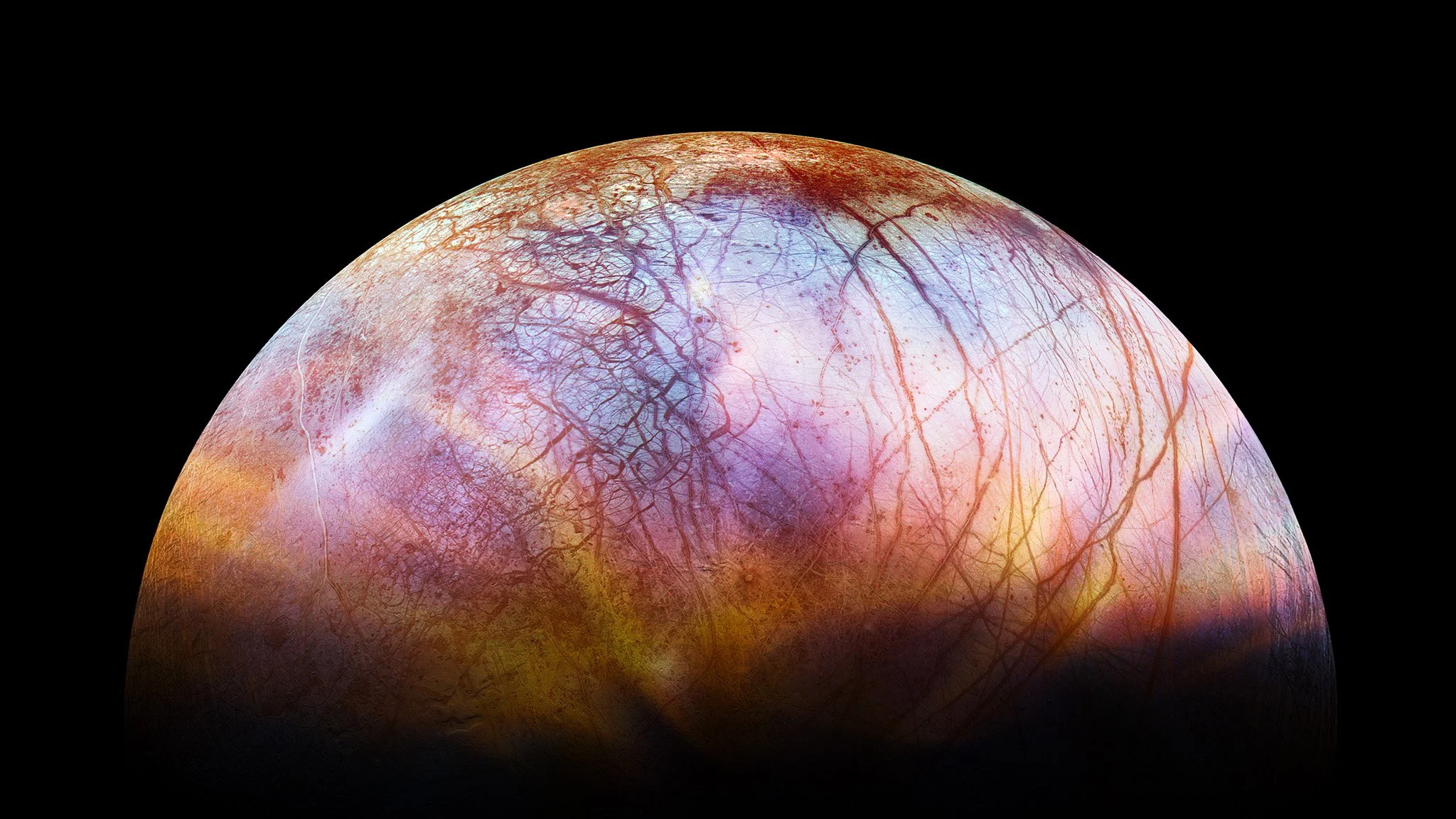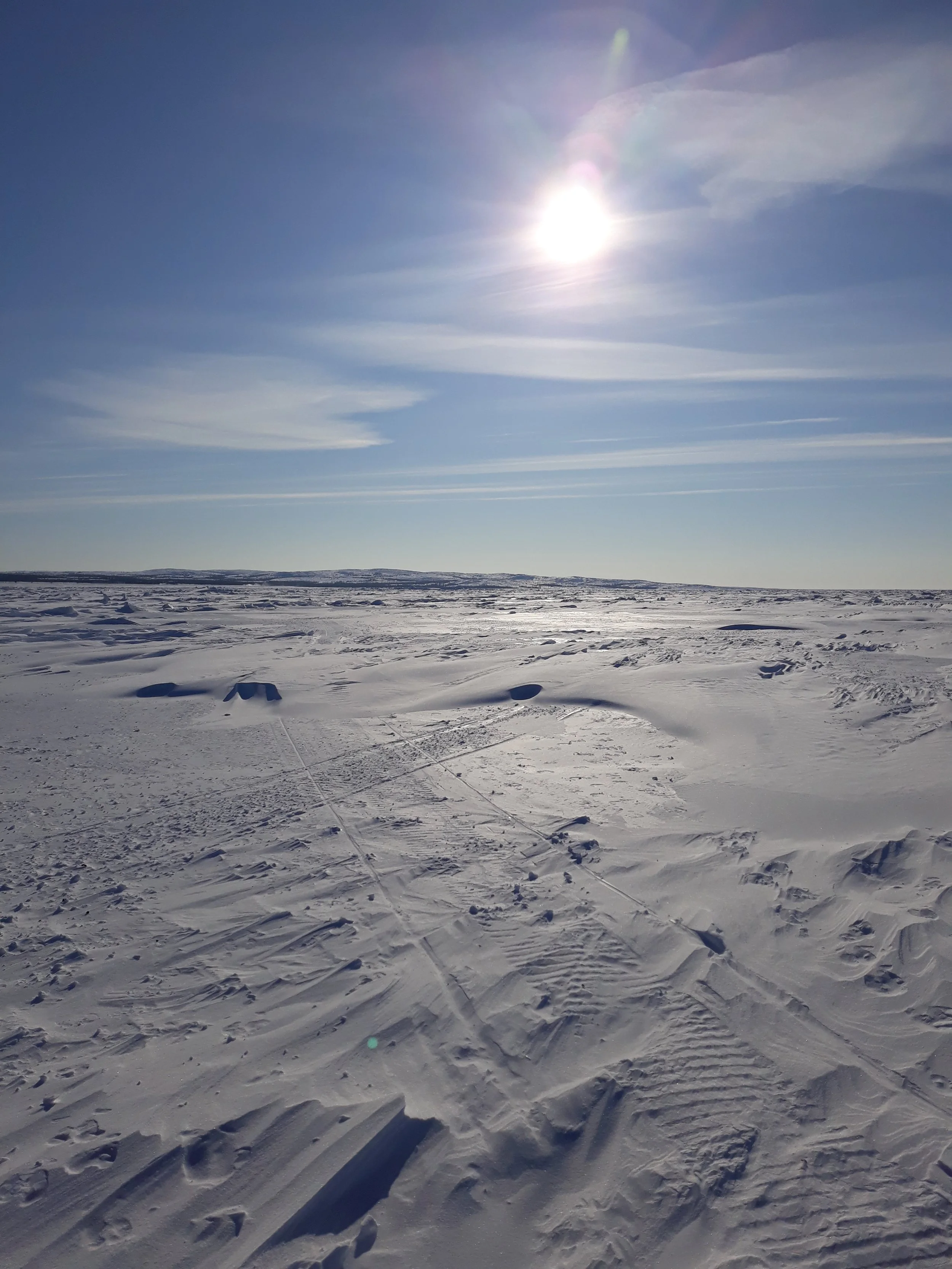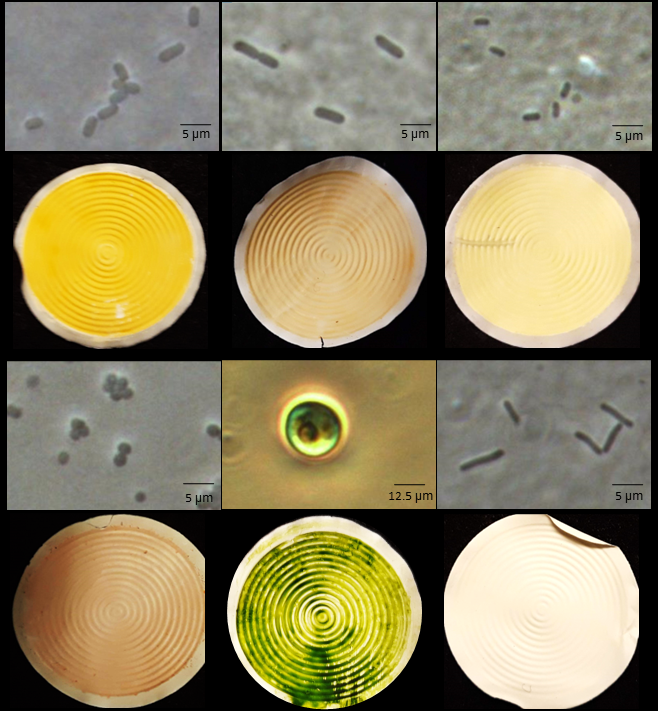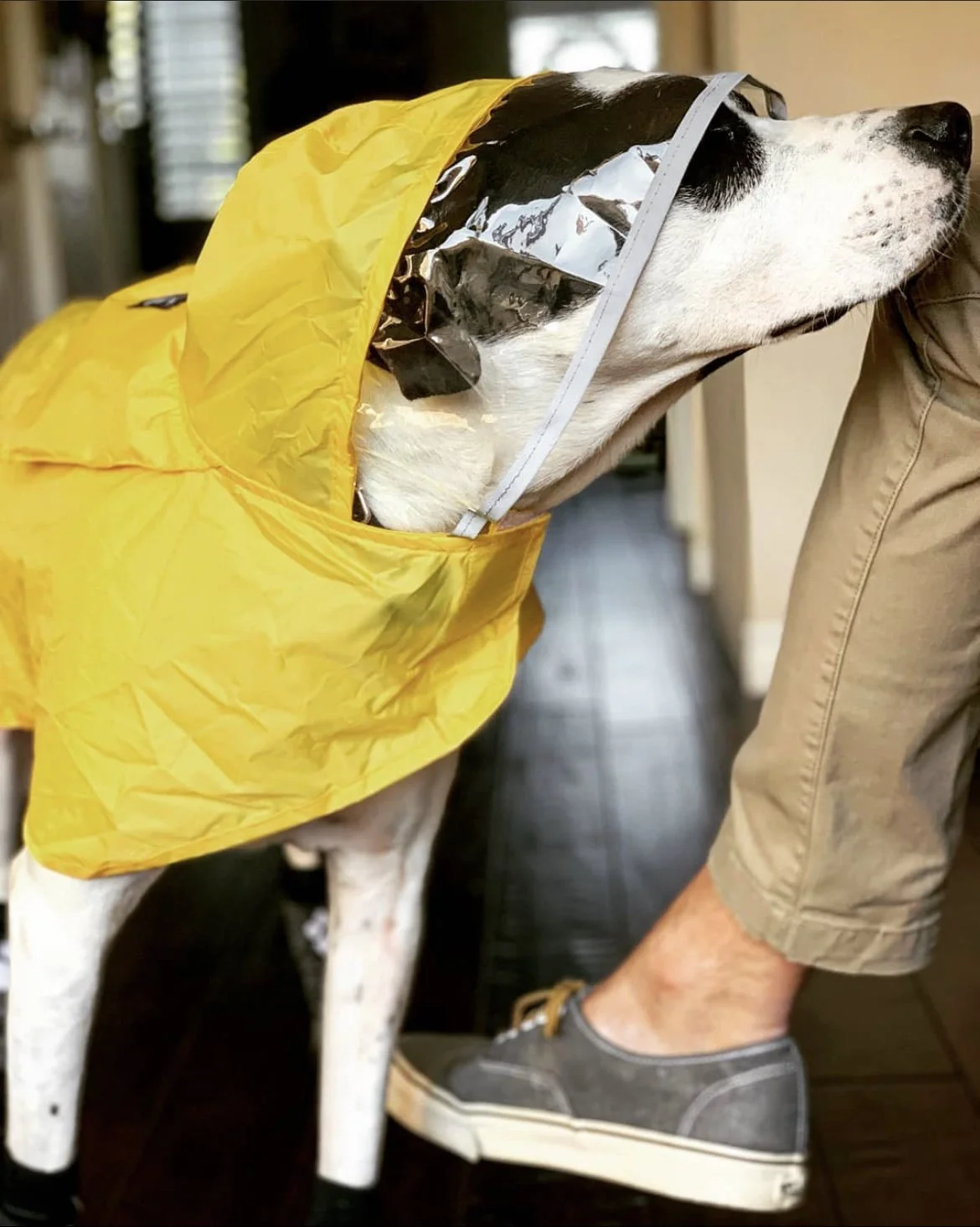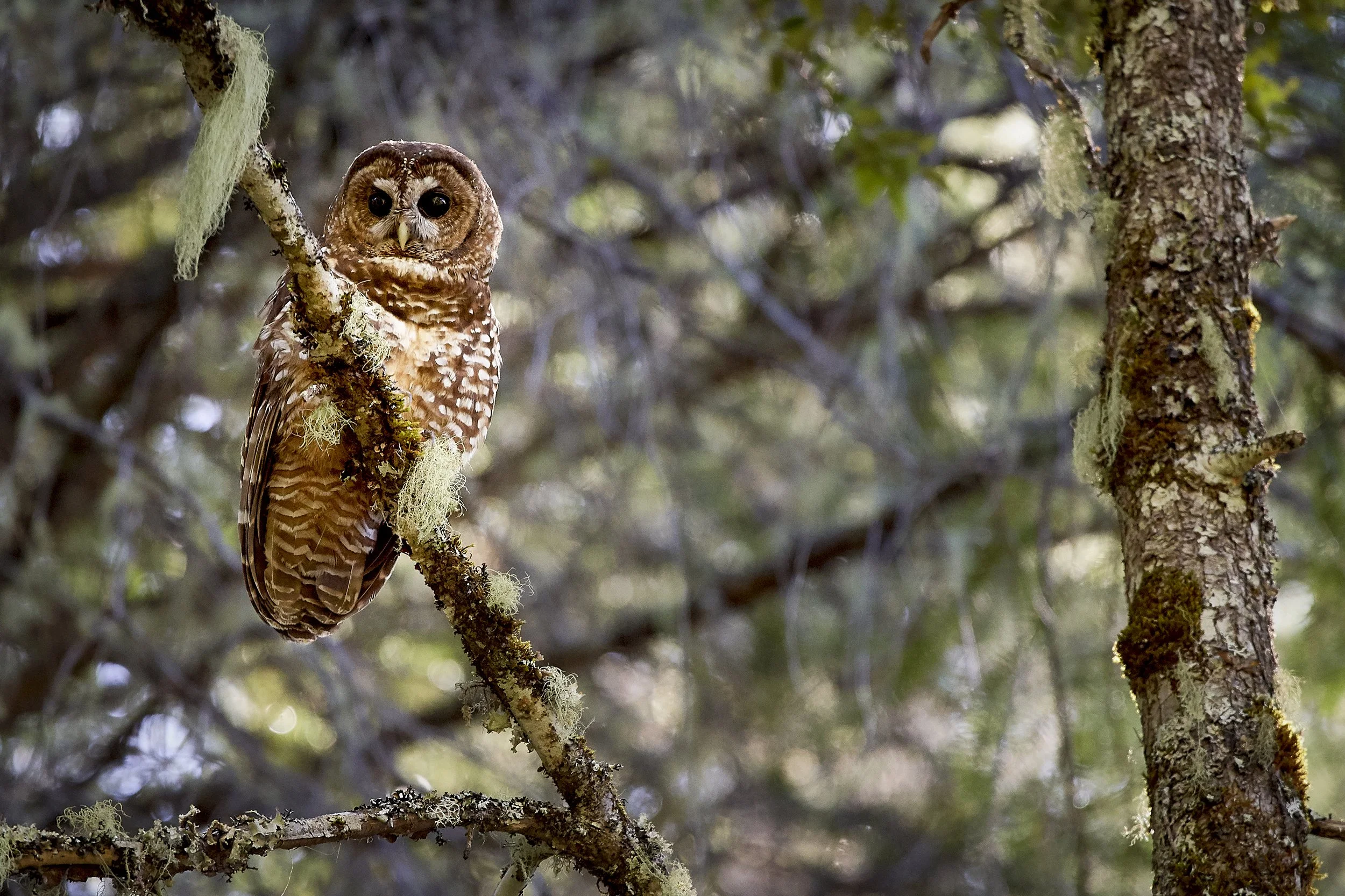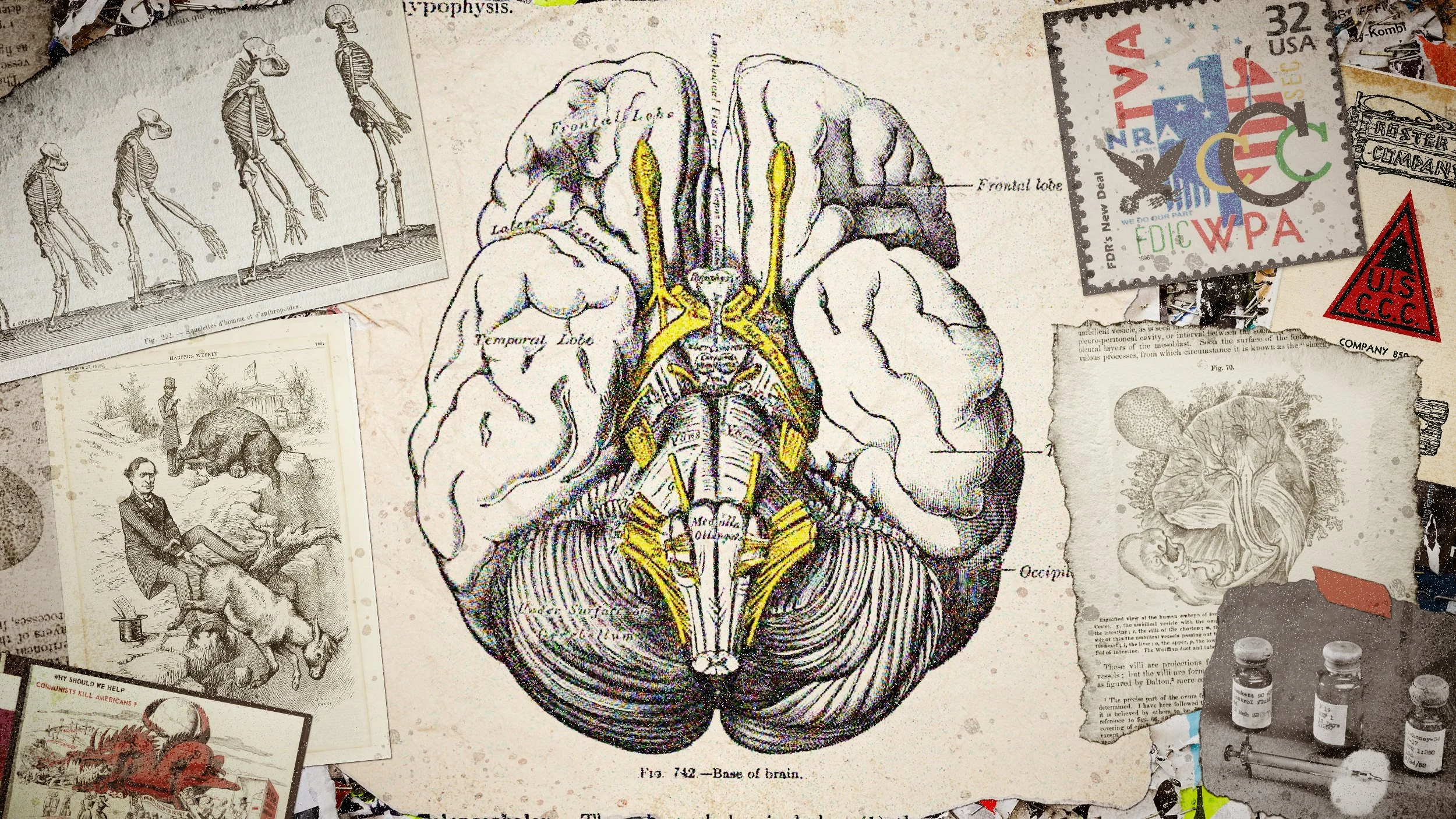Alien Hues
Helping astronomers recognize life’s signature colors
Jupiter's ice moon, Europa. Taken by NASA's Galileo spacecraft. Image credit: NASA/JPL-Caltech/SETI Institute, color modified by Tara Holley for The Science Writer
by Melissa Madden
June 21, 2023
In a waterfront Canadian town known for its harsh winters, four researchers on a pair of snowmobiles search for potential aliens. They’re armed with ice coolers and a rifle: one for the aliens, one for potential predators. The international group discusses ice conditions and directions in English, bypassing native languages among the four of them. One lead researcher, Lígia Coelho, is an astrobiologist from the University of Lisbon in Portugal. Like a rookie astronaut, her robust training has finally propelled her to a new, extreme environment — it’s her first time seeing snow.
Arctic ice plain at Whapmagoostui-Kuujjuarapik, Quebec, Canada. Image credit: Lígia Coelho
Coelho’s team chases practical questions about life on other planets. Their mission is to create a color-coded galaxy guidebook to find life on other planets. And if you want to find something, you have to know what it looks like. Aliens probably won’t be small, strange green people, but scientists agree they could be small and strange. Coelho’s leading suspects are single-celled organisms that live in extreme environments, such as bacteria, fungi, or algae. Microbes are the oldest, most abundant bits of life, with polar microbes the closest possible examples of what might survive in the extremes of space. The next step is to identify their colors. Light waves are the primary tool astronomers use to study the chemical makeup of faraway planets. By knowing what colors our own samples of life would emit as they reflected light through space- and ground-based telescopes, we might recognize similar microbes shining from the surface of an icy exoplanet. In simple terms, the guidebook is a tool for determining what colors to look for.
Coelho’s team is hunting for clues near the communities of Whapmagoostui and Kuujjuarapik in Quebec, on the banks of the vast Hudson Bay with the support from the Centre for Northern Studies. The arctic tundra is sparse except for sunlight and ice. Coelho wears snow goggles as protection from the intense ultraviolet rays. Within the ice, polar microbes have evolved their own shields: they release a pigment that acts like a tinted sunscreen. These diverse pigments and the colors they present are the guiding lights that Coelho will measure and catalog for astronomers. The addition of these polar samples will build on 137 other cellular life-forms in a database developed by scientists from Germany’s Max Planck Institute for Astronomy, Cornell University, and NASA. One of the researchers, Cornell astronomer Lisa Kaltenegger, helped design the polar research with Coelho and astrobiologist Zita Martins from the University of Lisbon. By cataloging Earth’s examples, astronomers might recognize color signatures that shine our way. Life that can survive in these frigid conditions just might look like the life that can survive in the rest of the dry, starved, frozen universe.
Lígia Coelho, Fulbrighter Schuman scholar and postdoctoral researcher at Cornell University. Image credit: Lígia Coelho
As Coelho holds tight to the back of a snowmobile, she’s grateful for the Earthly advantage of local guides. The land near the research station is home to two Indigenous communities, the Inuit and the Cree. Frederick Audlarock, the guide with a keen eye for polar bears, steers over snow bridges and on top of frozen rivers, knowing exactly which ice is compact enough to drive on. To find life, they also must avoid traces of organic material — be it vegetation or even animal feces. “The spot has to be pristine,” Coelho stresses. “If you’re searching Europa or Enceladus [Jupiter and Saturn’s icy moons], you’re not going to have eukaryotic evolved life there.”
Over several days, the researchers collect ice and water samples at different spots. They step carefully to avoid contaminating the locations. Coelho uses an ice core drill to extract crystalline samples, with edges that match the white horizon. Any hidden microbes are too isolated to see for now. But the niche traits of these rare extremophiles might be exactly what would help extraterrestrial colonies bloom and, given the chance, paint the edges of an icier exoplanet.
***
Lígia Coelho and colleague drilling through ice at Whapmagoostui-Kuujjuarapik in Quebec, Canada. Image credit: Lígia Coelho
The fieldwork, at least on Earth, is complete. Beyond the Hudson Bay research lab begins stage two: microbiology. In a lab at University of Lisbon, Coelho separates colonies of life, identifying them by their genetic codes to find 80 distinct microorganisms. Some match known polar microbes, some look like polar cousins — new species. She might be the first person to abduct them and study them in a lab.
But newly discovered earthbound genetic code isn’t as exciting for an astronomy lab, and the data barely make the final color catalog, published in Astrobiology in 2022. Though the astrobiologists started with microscopes and DNA, they need to explain what it all means for astronomers who use telescopes and light waves. That’s why an interdisciplinary guidebook is essential. In short, even if you know what you’re looking for, you still have to find it with the tools you have.
It's like speaking across cultures: newcomers to the Arctic can’t tell which ice is safe enough to drive on. But exchanging knowledge with local experts and translating what’s important helps people and science go places they’ve never been. The search for life, like life itself, is a search for meaning.
The final step of building the guide is measuring the color of each new dot of life. At labs in New York associated with the Carl Sagan Institute at Cornell University, astrophysicist Jack Madden sets up a small shrink-ray-looking machine, called a spectrograph, that measures light wavelengths. When they test a leaf from a plant, a mini orb glows green to reflect and record the precise shade. Coelho drops microbes in a solution onto filter paper and runs them over to Madden at the spectrograph. One by one, they get an early glimpse of color. Among the yellows, oranges, two greens, and one purple, Coelho can’t help but pick a favorite biosignature: an icy pink.
A Color Catalogue of Life in Ice: Six samples collected from arctic ice cores at Whapmagoostui-Kuujjuarapik. A total of 80 samples were analyzed and catalogued by Coelho's team. Image credit: Lígia Coelho
But as she measures more samples using wavelengths, she’s surprised by what she notices with her bare eyes when they’re simply sitting outside of the spectrograph. She didn’t expect the icy biota to be so bright. Compared to the same microbes in water, dry microbes (like those in ice, or left on a lab countertop) have more pigment. This change might be part of what helps the microbes protect themselves more extensively in a more stressful environment — like how we apply higher-SPF sunscreen in the desert. She translates what it means for space: given the resiliency of polar microbes, we don’t have to narrow our search for life to places with water. In fact, it might be easier if we didn’t. If life is indeed out there, our chances of finding it in dry, icy environments are better and brighter.
Coelho hopes that the study results also reflect positive change on Earth. If we were to find single-celled organisms beyond our planet, their conditions could hint at how life on Earth started. Microbes could also appear, however, as leftover dust at the end of a planet’s life. “Maybe that will give us clues on how it died and how life extinguished,” Coelho explains, adding that such information could help us avoid a similar fate. For now, she hopes the research can transcend astronomy into even more scientific fields. Biological models of how polar microbes work and spread may help climate scientists address polar ice melting. And studying microbes could reveal the mechanics of early cell evolution to upgrade biomedicine.
The color-coded guidebook could even steer us to a new understanding of life. For Coelho, the search for life is a search for knowledge, buoyed by the hope of protecting life as we know it on Earth. It’s both parts chase and a tedious wait. Together, we might find out we’re alone. Or we might discover we’re simply small, like every cell eking out a life in this universe.
Updated (11/20/2023): Certain place names have been updated to reflect the two neighboring villages of the study area.
Melissa Madden
Melissa Madden is an editor and science writer from Chicago. She has a bachelor’s degree in neuroscience, cognition, and biopsychology from the University of Michigan and is completing her master’s degree in science writing from Johns Hopkins University. Mel works as a copyeditor for cancer research.
Senior Editor: William Kucinski
Art Editor: Tara Holley
Copy Editor: Colin O'Connor

